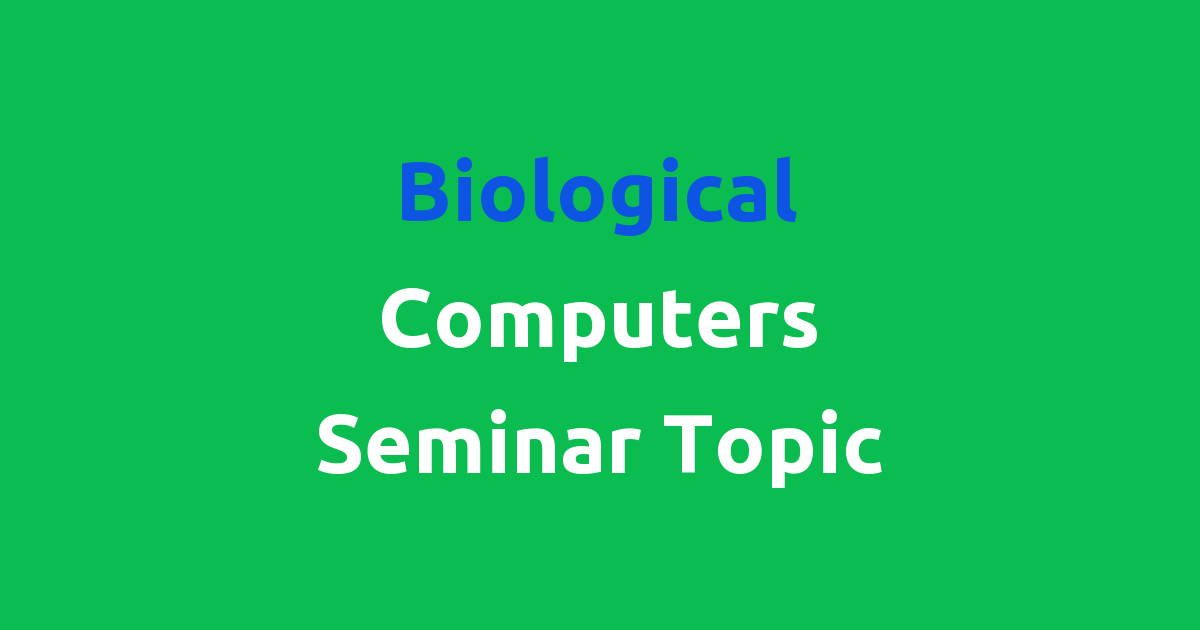Seminar topic on biological computing.
Biological Computers Seminar Topic
Introduction
In the field of technology, innovation is the key to unlocking new possibilities. One of the most exciting and cutting-edge areas of research is the development of biological computers. These computers use biological molecules such as DNA, proteins, and enzymes to perform computations instead of traditional silicon-based components. By harnessing the power of biological systems, researchers believe that they can create faster, more efficient, and more environmentally friendly computers.
Problem Statement
The current state of technology relies heavily on silicon-based computers. While these computers have advanced significantly over the years, they still have limitations in terms of speed, energy consumption, and scalability. Additionally, the manufacturing process for silicon-based computers can be harmful to the environment. There is a need for a new approach to computing that can overcome these limitations and pave the way for the next generation of technology.
Existing System
Silicon-based computers have been the backbone of technology for decades. These computers use transistors to perform logical operations, store data, and execute software. While they have advanced in terms of speed and storage capacity, they still have limitations. Silicon-based computers are prone to overheating, consume large amounts of energy, and are not easily scalable. Additionally, the manufacturing process for silicon-based computers involves the use of harmful chemicals and materials.
Disadvantages
The disadvantages of silicon-based computers are numerous. These computers are limited in terms of speed and energy efficiency. They are also prone to overheating, which can lead to malfunctions and damage to the hardware. The manufacturing process for silicon-based computers is harmful to the environment, as it involves the use of toxic chemicals and materials. Additionally, silicon-based computers are not easily scalable, which limits their potential for future advancements in technology.
Proposed System
The proposed system for biological computers aims to overcome the limitations of silicon-based computers by harnessing the power of biological molecules. These computers will use DNA, proteins, and enzymes to perform computations, store data, and execute software. By leveraging the unique properties of biological systems, researchers believe that they can create faster, more energy-efficient, and more environmentally friendly computers. The manufacturing process for biological computers will also be more sustainable, as it will not rely on toxic chemicals and materials.
Advantages
The advantages of biological computers are numerous. These computers have the potential to be faster and more energy-efficient than silicon-based computers. They are also less prone to overheating, which can extend the lifespan of the hardware. The manufacturing process for biological computers is more sustainable and environmentally friendly, as it does not involve the use of harmful chemicals and materials. Additionally, biological computers have the potential to be more scalable than silicon-based computers, allowing for greater advancements in technology.
Features
Some key features of biological computers include:
– Fast computation speeds
– Energy efficiency
– Environmental sustainability
– Scalability
– Resistance to overheating
– Novel applications in healthcare, biotechnology, and other fields
Conclusion
In conclusion, the development of biological computers represents a significant advancement in the field of technology. By leveraging the power of biological molecules, researchers have the potential to create faster, more energy-efficient, and more environmentally friendly computers. The proposed system for biological computers overcomes the limitations of silicon-based computers and paves the way for the next generation of technology. With their unique features and advantages, biological computers have the potential to revolutionize the way we think about computing.

